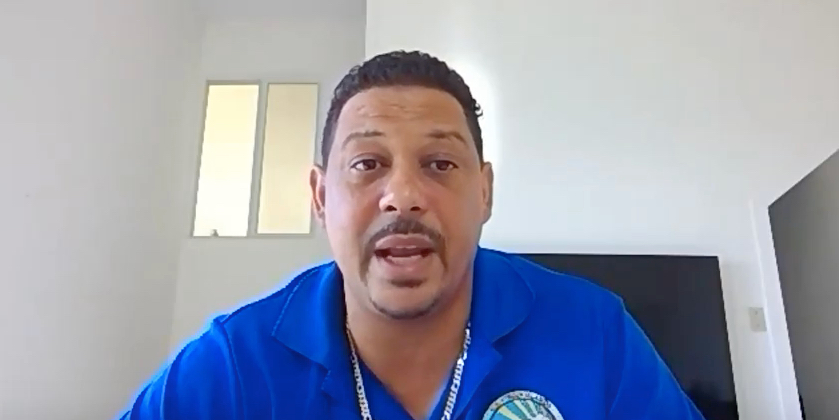
Commissioner J.P. Oriol of the V.I. Department of Planning and Natural Resources said the last attempts at drafting a comprehensive land- and water-use plan for the territory were 20 and 30 years ago.
During his presentation to the League of Women Voters Saturday Oriol made it evident that the project is daunting, considering all of the land, water, resources, stakeholders and laws involved.
They hope to complete the work in two years. But if people cannot work together,“It may be why it might takes 10 years again,” he quipped during the session.
The department has started the project again and the first step is for the V.I. legislature to approve a land density and zoning plan written in 2012 and submitted in 2014.
“We stand here seven years later and these pieces have not been moved forward,” he said during the Zoom presentation.
That piece of the code has been submitted to the governor, and Oriol hopes it will be approved “before the summer months.”
Other components of a comprehensive plan include water regulations, transportation and school locations. All currently are being worked on by various entities.
Assistant Commissioner Keith Richards said the department is mandated also to include the communities’ vision on such issues as wildlife, historic buildings and protecting water resources. Residents will be included in making decisions and how they are finalized.
The Coastal Zone Management division of DPNRA began a water-use plan in 2017. The study involved a group of stakeholders who work or live near water areas on all three islands. They recommended the department study and define transient mooring and day-use for the waters, and then they were interrupted by the 2017 hurricanes. Last week, the charter industry requested transient moorings be installed across the territory.
At this point, the department is ready to begin bringing in experts by summer to help form a comprehensive land and water plan for St. John with a funding award of $300,000. Although some components will take place simultaneously, the goal will be to complete St. John’s plan first, because it is smaller and a large portion of the land is designated National Park, Oriol said.
The commissioner said he hopes funding for the master plans will come from an $80 million fund from a CBDG hurricane mitigation fund from HUD.
“We are prepared to request up to $2.2 [million] from CBDG,” to complete the work and two years to complete the plans, he said.
The audience of more than 50 people asked questions and added comments during the last hour of the presentation. These included:
– Oriol said there has not been a study about the results of the Legislature rezoning specific parcels of land, but a database has been started to reference in the future. A proposed amendment removes that function from the Legislature but it will be up to the senators to strike it out or let it remain. Richards said a new proposed planning committee would also address that issue.
– Several people were interested in how to avoid more gas stations being built in the territory and especially near wetlands. Oriol pointed out that currently, a land owner can use his land how he/she want and if the applicant follows all procedures, the approval is based on “a matter of right.” If the law is changed to “a matter of condition,” it would depend more on the needs of the public.
– The audience asked about single-tier versus two-tier projects and Oriol clarified that single-tier is for smaller projects such as residences, and major projects are categorized as two-tier. Two-tiered projects require environmental, economic and public input, he said. “The difference is a public hearing.”
– Oriol said that the comprehensive plan will take into consideration the following items: No specific uses will be changed in CZM applications; the plan will be protected from political intervention, because of public interest and input, he said; prevention of environmental damage, as well as restoration and regeneration, will be included in the plan’s recommendations; watershed plans will be studied for drainage to present information for FEMA and Public Works road work; beach and shoreline erosion will be taken into consideration as well as wetland restoration; the “no net loss” or replacing a mangrove with a mangrove philosophy will be continued.
– The commissioner acknowledged there is draft legislation to develop a park system within the territory.
– Another question involved the shortage of DPNR enforcement personnel. Oriol said the goal is 10 officers in each district, but they hope for six with the available funding. They have three currently.
– The Historic Preservation Office will be included in the planning process especially in the historic districts, Oriol told the audience.
The League of Women Voters hosts similar meetings once a month. The public can attend through a Zoom link on the League’s website.
Editor’s note: The plan is projected for two years but Oriol said it could take longer if people cannot reach a consensus.





